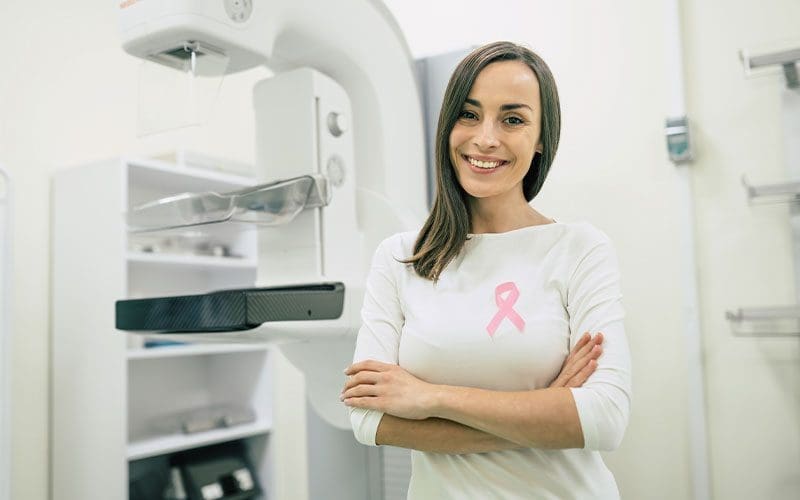
Published: June 07, 2018
Digital Mammography
Although comparable to conventional film mammography, digital testing has proven benefits in breast cancer screening for women: shorter exam times, lower doses of radiation, faster image acquisition, image alteration capabilities by physicians, and the improved contrast between dense and non-dense breast tissue.
While conventional mammography systems create pictures on x-ray films, digital mammography systems use computers and digital images providing greater benefits for patients and physicians. Unlike film images, digital images can be altered in areas such as magnification, brightness, and contrast to help physicians clearly see certain images. Because these digital images can be manipulated in clarity, the probabilities for repeat mammograms are decreased.
Women can also benefit from digital mammograms because of shorter exam times and lower doses of radiation. Exam times are often shorter because the x-ray images are readily available within a minute after the data is captured and there is no film to develop. Although radiation doses in film mammography are extremely low and safe, radiation doses used in digital mammograms can be reduced considerably and still detect breast cancer as well as conventional film methods.
Perhaps one of the most beneficial factors of digital mammography is for women who have dense, or non-fat breast tissue. Fatty tissue appears very dark on mammograms and dense tissue appears as solid white. Unfortunately, tumors also appear white, making them hard to detect because they look like the dense tissue that surrounds them. Digital mammography, however, is able to see the clarity and contrast between dense breast tissue and breast tumors. Mammography, whether film or digital, remains the best method for early breast cancer detection.
Fewer Repeat Mammograms
Unlike film images, digital images can be altered in magnification, brightness, and contrast to help physicians clearly see certain images the first time a patient has a mammogram.
Shorter Exam Times
Digital images are available within a minute after the data is captured and there is no film to develop.
Lower Radiation Doses
Although radiation doses in film mammography are extremely low and safe, radiation doses used in digital systems can be reduced considerably and still detect breast cancer just as well.
Clarity and Contrast
Women who have dense, or non-fat breast tissue, benefit from digital mammograms. Fatty tissue appears very dark on mammograms and dense tissue appears as solid white. Unfortunately, tumors also appear white, making them hard to detect because they look like the dense tissue that surrounds them. Digital mammography, however, is able to see the clarity and contrast between dense breast tissue and breast tumors.
To schedule a mammogram in either Galion or Bucyrus call:
- Galion Hospital: 419-468-8227
- Bucyrus Hospital: 419-462-3310